Algebraic Notation in Chess explained for beginners
07/08/2023
- Let's get to know the chessboard
- Chess Pieces Abbreviations
- Algebraic Notation in Chess Example
- Examples of Algebraic Notation in Chess of the Pawn
- Examples of Algebraic Notation in Chess for the Major Pieces (Rook-Knight-King-Queen)
- Algebraic Notation in Chess for the capture
- Algebraic Notation in Chess for the castling
- Algebraic Notation in Chess for the check and checkmate
- Algebraic Notation in Chess for pawn promotion
- What is the purpose of algebraic notation in chess?
- Do you know of any other benefits of knowing algebraic notation in chess?
The algebraic notation in chess is a type of language to annotate the moves that happen on the chessboard. It can be used to replay games at any time we need it, make comments, annotate our own games and even improve our calculation in chess, a topic that we will explain in this guide later on.
Let's get to know the chessboard
Before starting to explain algebraic notation in chess, it is necessary to explain the chessboard, the battlefield where our ideas battle against those of our opponent.
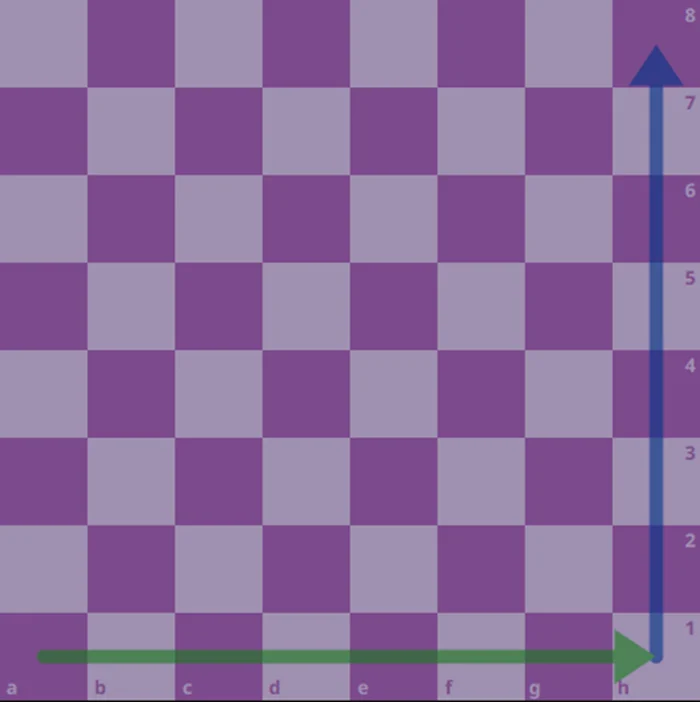
This is the chessboard and as we can see it is full of 64 squares or as they are called in chess "squares". All the squares together form rows (green arrow) and columns (blue arrow).
Letters are placed in the rows, from the letter A to the letter H.

And in the columns the numbers are placed, from 1 to 8.

The numbers and letters on the board are there because each square has a unique name by which we can identify them.
For example.
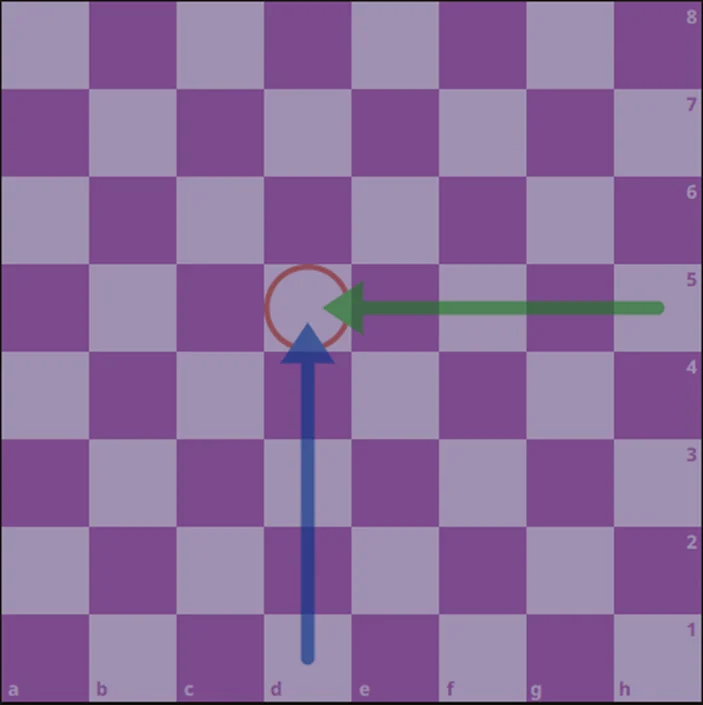
Let's say we want to know the name of that cell (marked with the red circle), first we need to know what is the letter of that column (blue arrow) and then what is the number of the row (green arrow), finally we combine both and identify that cell as d5 (the letter always goes before the number).
In this way we create a coordinate that is also the name of the square.
Chess Pieces Abbreviations
Now that we have understood the chessboard we have to continue with the pieces and how they are represented in the algebraic notation in chess.
Algebraic Notation in Chess Example
Now that we know what the squares of the board are called and how the pieces are abbreviated in chess, we are ready to see some examples.
Examples of Algebraic Notation in Chess of the Pawn
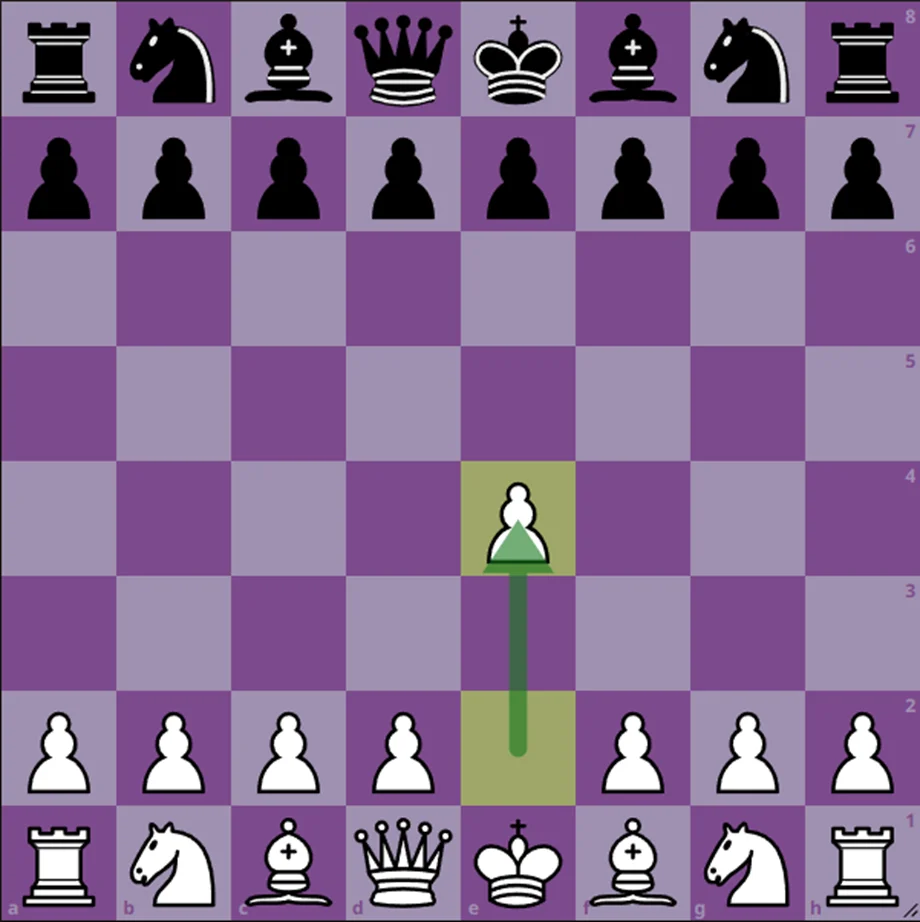
In this position White wanted to start by moving his king's pawn.
Always write down first the letter of the piece to be moved and right next to that letter, write down the destination square of the piece (to which square it will be moved).
As the pawns are not annotated with any letter to represent them, they are only annotated to the square to which they will move.
- e4 (the white pawn moved to the e4 square)
This would be the correct way to write down this movement, first write the movement number and then the movement.
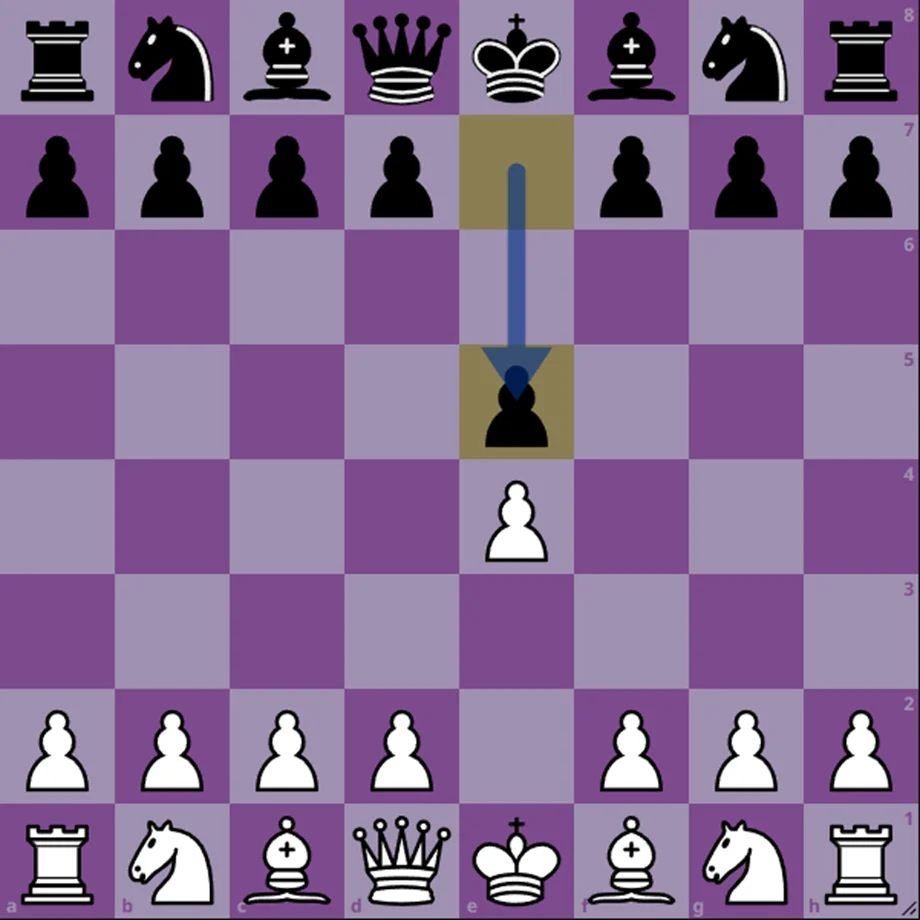
Black responds by moving his king's pawn as well.
- e4 e5(the black pawn moved to the e5 square)
As it is also Black's first move, it is annotated next to White's first move, with a separation between them.
Examples of Algebraic Notation in Chess for the Major Pieces (Rook-Knight-King-Queen)
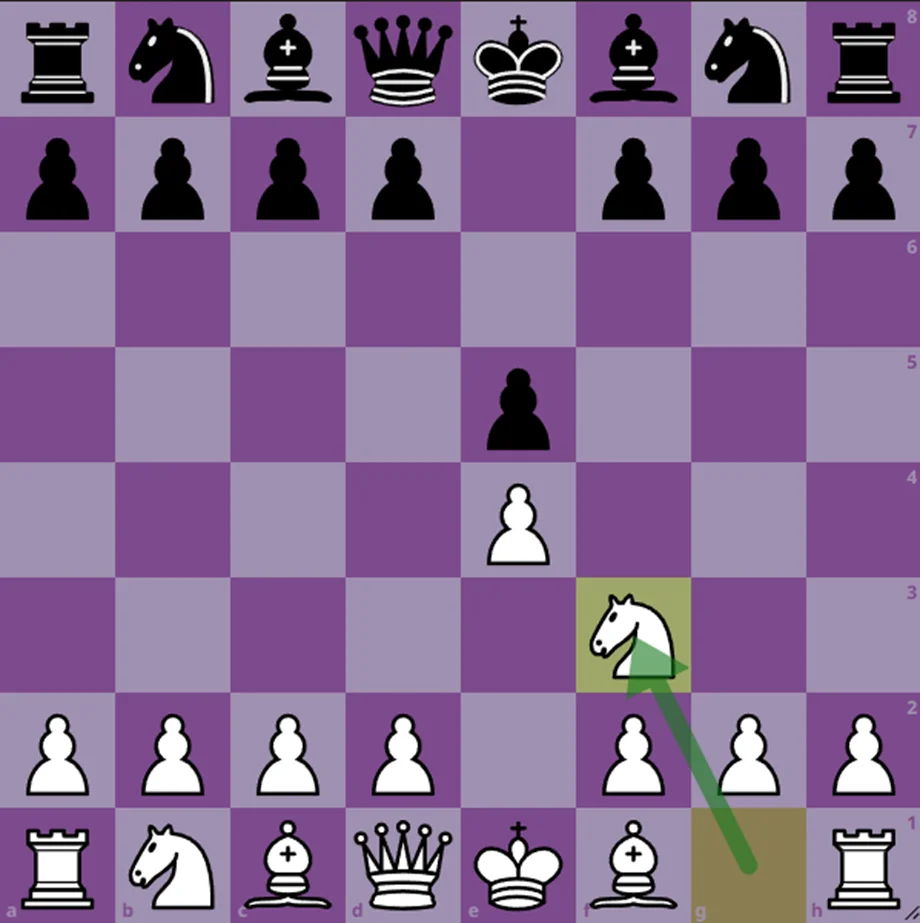
White in his second move developed his knight attacking Black's pawn.
- e4 e5
- Nf3 (White moved his knight to the f3 square)
(the abbreviation of the knight is the letter N, because the letter K is occupied by the king).
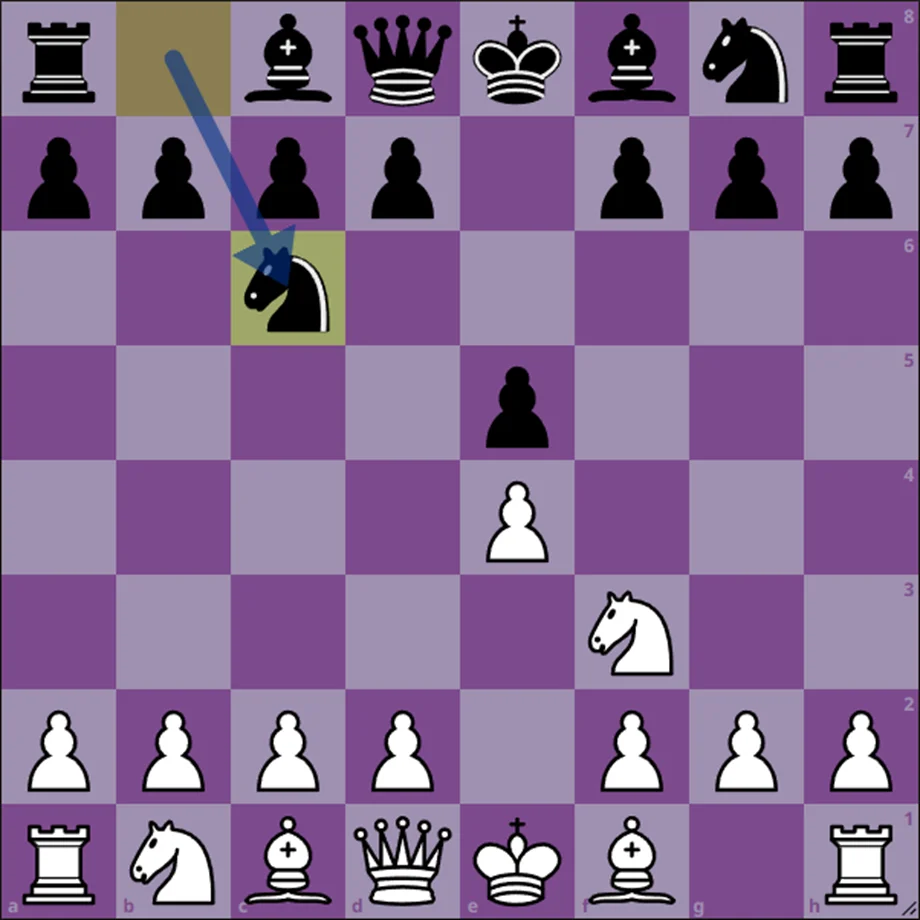
Black's second move was to take out his knight to defend his central pawn.
- e4 e5
- Nf3 Nc6 (black moved his knight to the square f6)
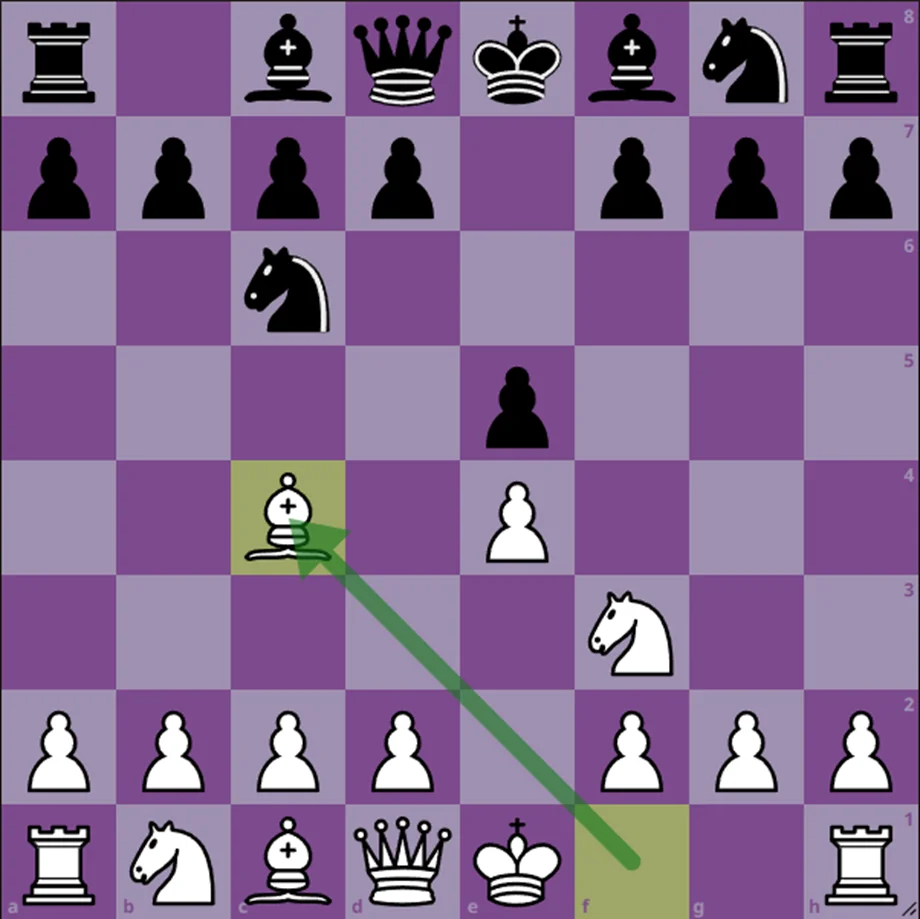
On his third move White brings his bishop into play.
- e4 e5
- Nf3 Nc6
- Bc4 (white moves his bishop to the c4 square)
The letter representing the part is always uppercase.
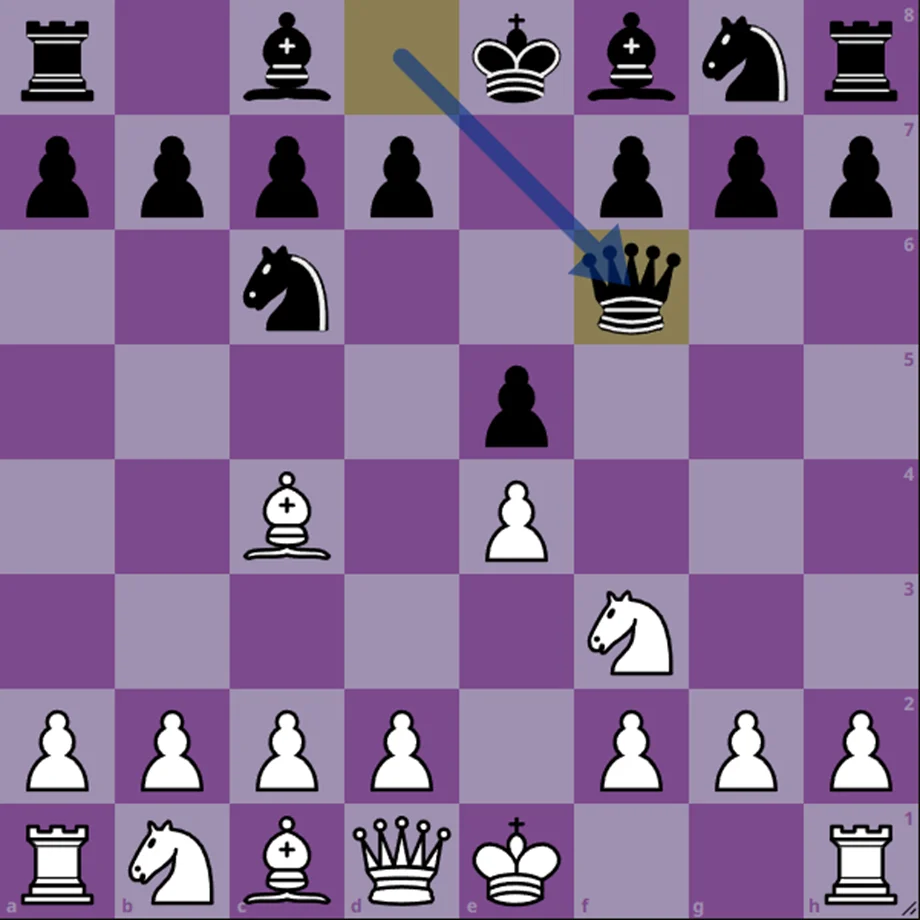
Black brings out his queen to play.
- e4 e5
- Nf3 Nc6
- Bc4 Qf6 (black moves his queen to the square f6)
Algebraic Notation in Chess for the capture
Now let's continue looking at our example, but let's include the capture of pieces.
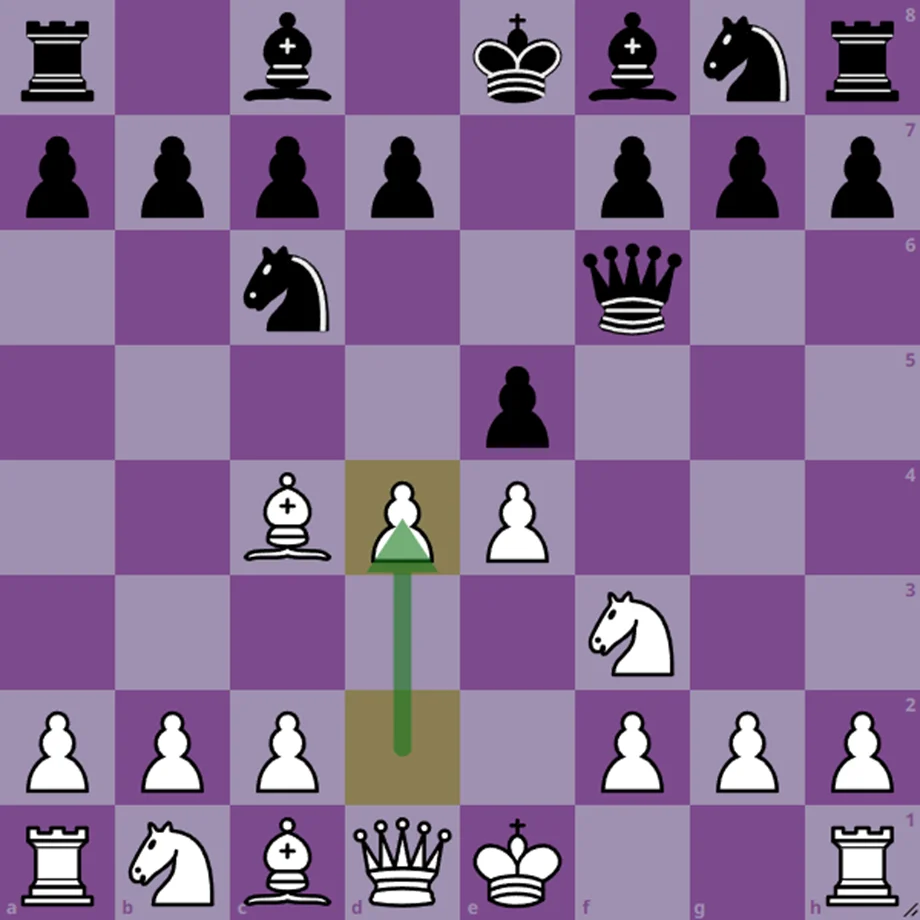
White moves his queen's pawn
- e4 e5
- Nf3 Nc6
- Bc4 Qf6
- d4 (white moved his pawn to the square d4)

Here the black pieces captured the white pawn on the d4 square.
To annotate this move what we have to do is to write a letter "x" between the name of the piece and the name of the square of the piece we capture.
- e4 e5
- Nf3 Nc6
- Bc4 Qf6
- d4 exd4 (the pawn that was on e5, captured the piece on d4)
Since the pawn does not have a letter that represents it like the other pieces, the letter of the square where it was located before capturing the piece is written down.
Algebraic Notation in Chess for the castling
Let's see how to write down the two castles that can be made in chess, the short castling and the long castling.
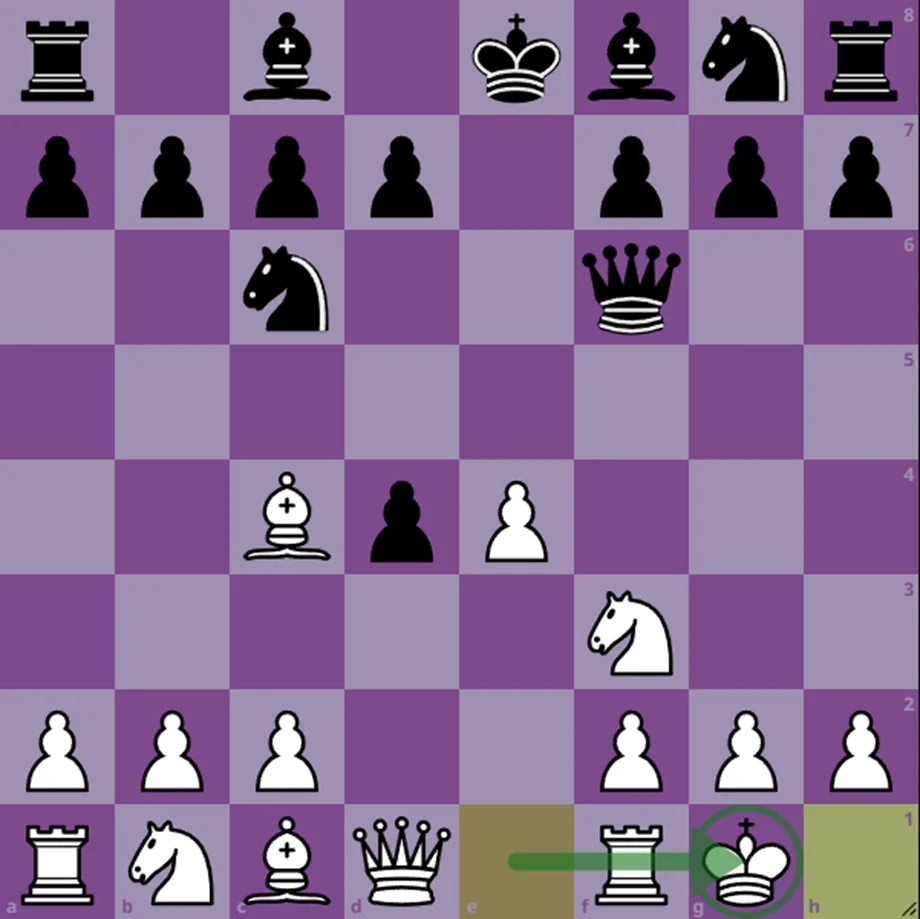
White decided to castle short and put his king to safety.
The correct way to annotate the short castling is "O-O" with two letters O separated by a hyphen.
- e4 e5
- Nf3 Nc6
- Bc4 Qf6
- d4 exd4
- O-O (white played short castling)
When we want to write down the long castling, the only thing that is added is one more O, remaining as follows: "O-O-O".
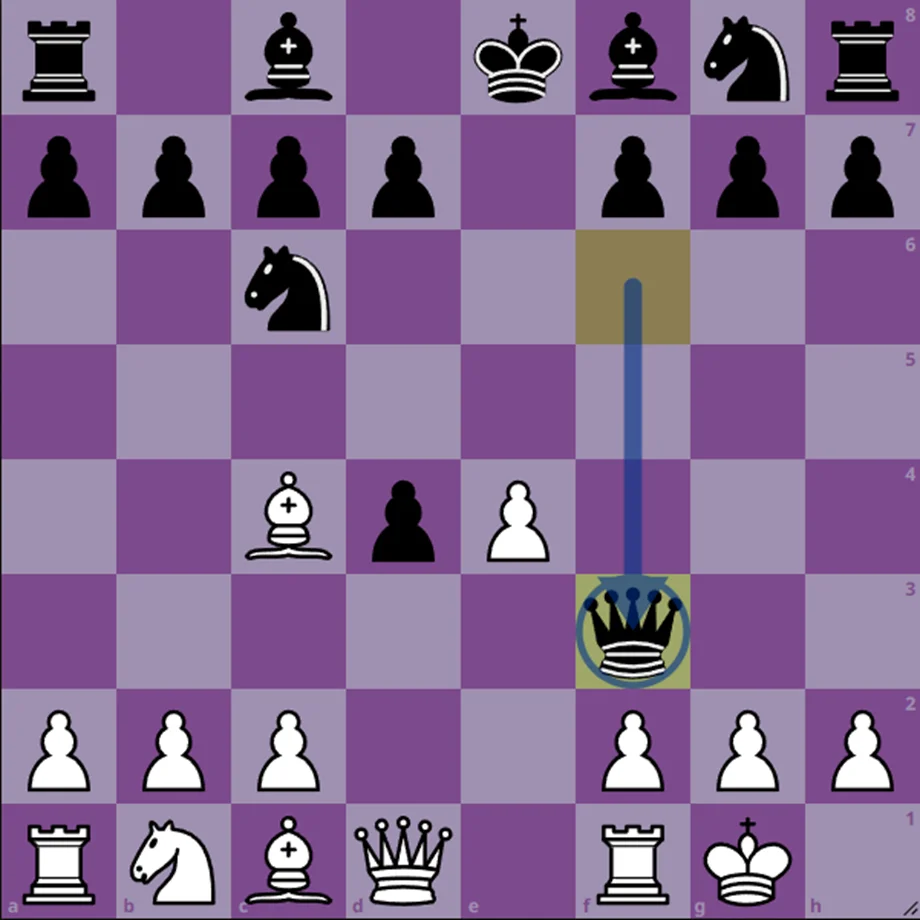
Black captured the knight with his queen.
- e4 e5
- Nf3 Nc6
- Bc4 Qf6
- d4 exd4
- O-O Qxf3 (black captured with his queen the piece that was on f3)

White captures the black queen with his own queen.
- e4 e5
- Nf3 Nc6
- Bc4 Qf6
- d4 exd4
- O-O Qxf3
- Qxf3 (White captured the piece on f3 with the queen)

Black moved his rook.
- e4 e5
- Nf3 Nc6
- Bc4 Qf6
- d4 exd4
- O-O Qxf3
- Qxf3 Rb8 (black moved his rook to the b8 square)
Algebraic Notation in Chess for the check and checkmate
Now it is our turn to learn how to score two of the most important moves in chess, check (a threat to the king) and checkmate (the end of the game).
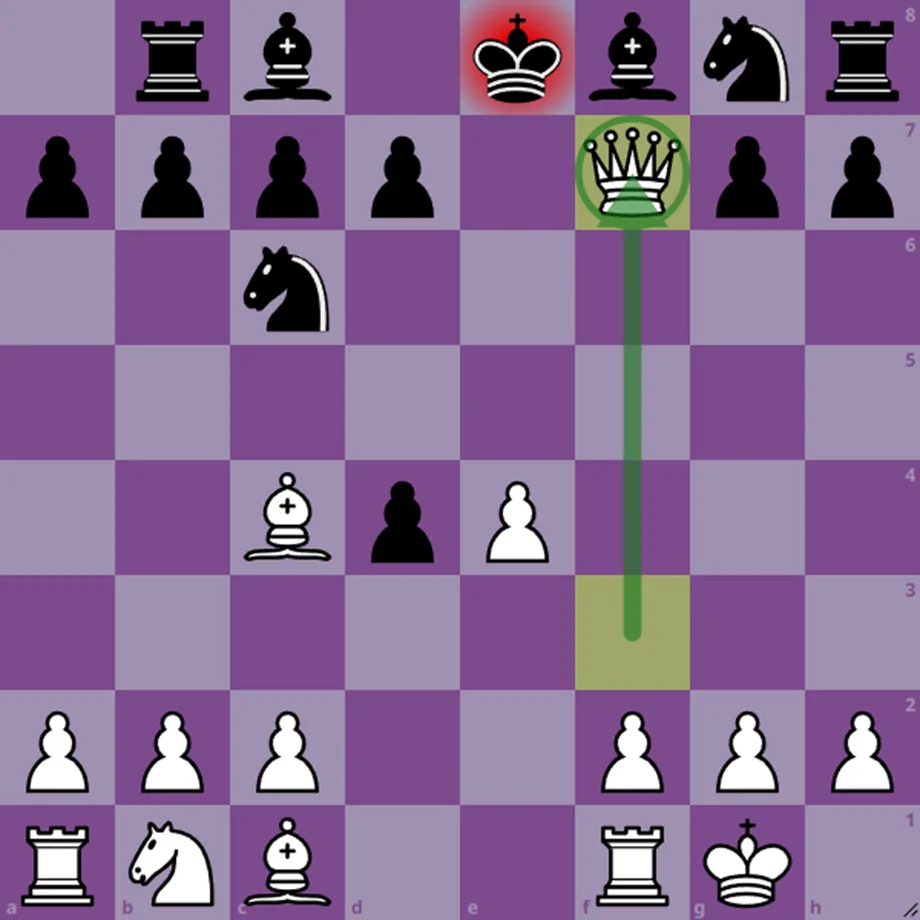
White saw an opportunity to attack the king and entered with his queen which cannot be captured by the black king, since the queen is defended by his white bishop.
The algebraic chess notation form of check is with a "+" sign after the move.
- e4 e5
- Nf3 Nc6
- Bc4 Qf6
- d4 exd4
- O-O Qxf3
- Qxf3 Rb8
- Qxf7+ (the queen captured the piece that was on f7, giving check to the king)
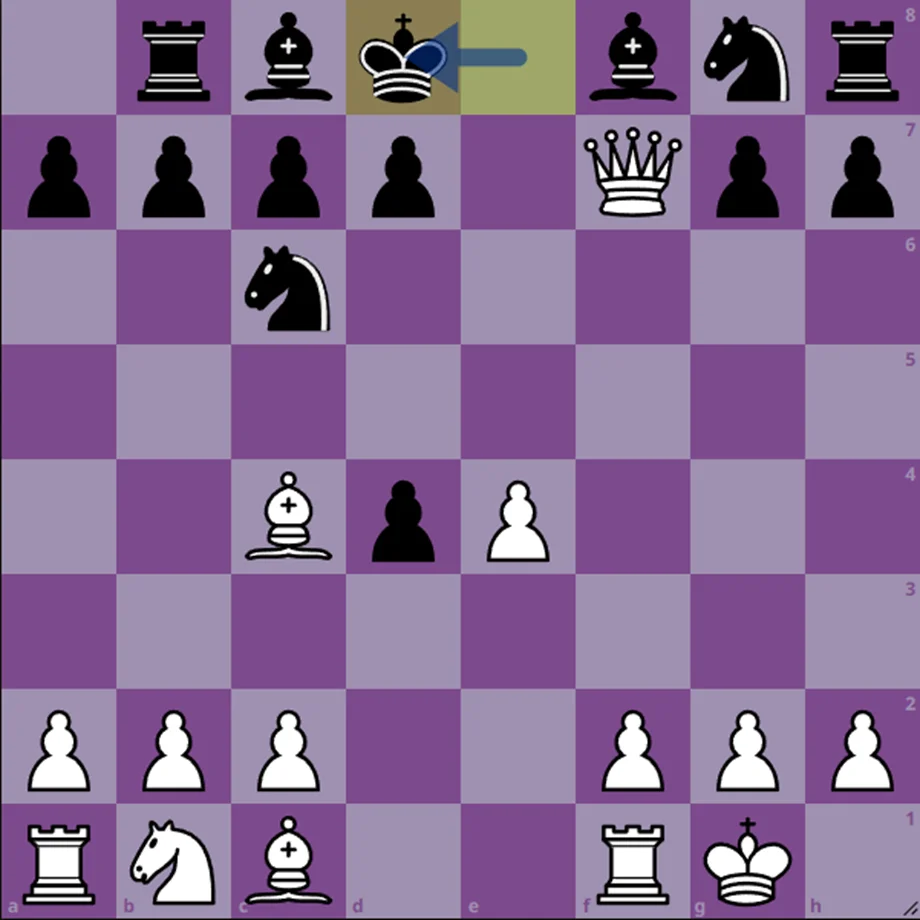
The black king, with no other option left, had to move.
- e4 e5
- Nf3 Nc6
- Bc4 Qf6
- d4 exd4
- O-O Qxf3
- Qxf3 Rb8
- Qxf7+ Kd8 (Black moved his king to the d8 square)

White delivers the final blow to win the game.
The checkmate notation can be represented in two ways, the first is with a "++" after the last move or with a "#" sign, which also represents checkmate.
- e4 e5
- Nf3 Nc6
- Bc4 Qf6
- d4 exd4
- O-O Qxf3
- Qxf3 Rb8
- Qxf7+ Kd8
- Qf8++ (black played his queen to the f8 square giving checkmate to the white king).
Algebraic Notation in Chess for pawn promotion
Finally, we have to learn how is the algebraic notation in chess when we promote a pawn, for that we are going to see a small example.

In this position it is White's turn and in his next move he will promote his pawn on the a7 square.
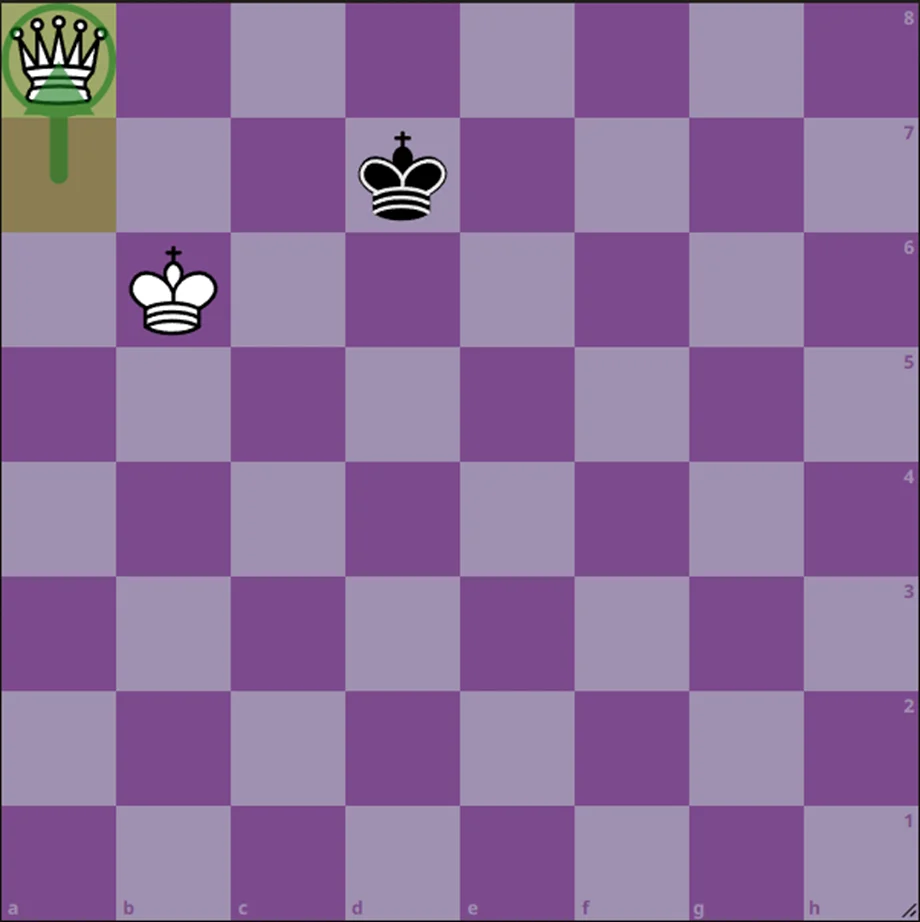
To write down this move we first write in which square the pawn was promoted followed by an "=" sign and then finish with the letter of the piece we want to crown (queen - knight - bishop - rook).
The algebraic notation of the play in the image would be as follows:
- e8=Q
What is the purpose of algebraic notation in chess?
As we said at the beginning, this serves mainly to write down our own games and later to review them, besides it is a requirement to write down your games in a template in official FIDE tournaments.
It also serves to improve our way of calculating in chess
The vast majority of beginners calculate moves by saying "I move the knight here, he moves here, then I give check here" but this way of calculating moves is inefficient, but instead if we occupy the coordinates what we would think is the following "Axg6 check, his king moves to g8 and I give mate by moving my queen to h8". In this way when the lines we calculate are very long we can go back in our calculation, since we will remember in which squares we will leave the pieces.
Do you know of any other benefits of knowing algebraic notation in chess?
⭐️ If you want to know more about other articles similar to Algebraic Notation in Chess explained for beginners you can visit our category Chess For Beginners. We are waiting for you inside 👍

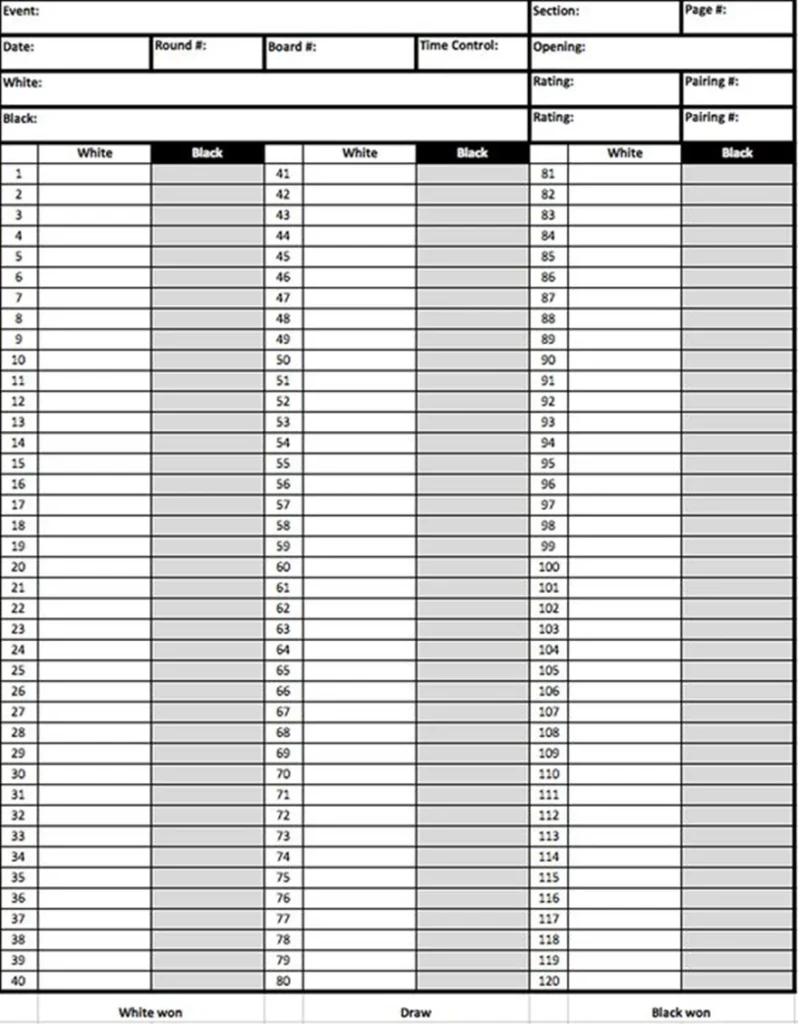

Leave a Reply